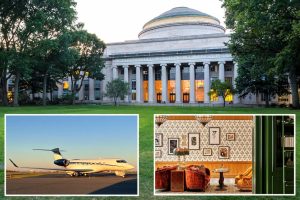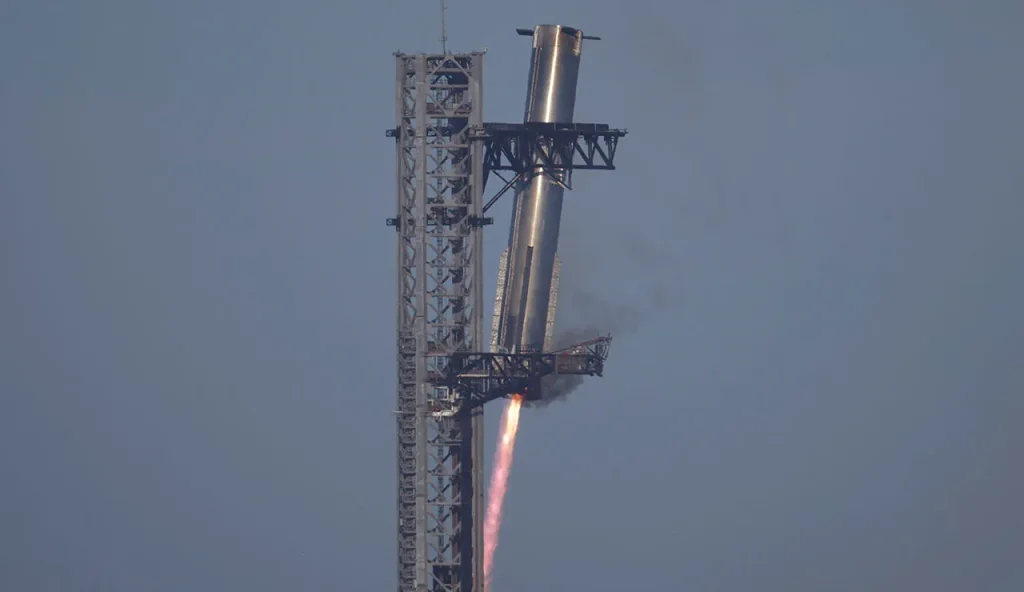Paragraph 1: The Launch and Initial Ascent
On a seemingly ordinary day at SpaceX’s Starbase test site in Boca Chica, Texas, the mighty Starship Super Heavy booster embarked on its seventh test flight. This towering rocket, a cornerstone of Elon Musk’s ambitious space exploration vision, stood poised to carry a new and upgraded spacecraft on a near-loop around the world. The primary mission objective involved deploying ten dummy satellites, a crucial rehearsal for future operational launches. As the countdown reached zero, the 400-foot rocket ignited its engines and thundered skyward, leaving behind a trail of fire and smoke. The initial phase of the ascent proceeded as planned, with the booster separating from the spacecraft approximately two minutes and 45 seconds after liftoff. The booster then initiated its return trajectory towards Starbase, seemingly on track for a successful landing.
Paragraph 2: The "Rapid Unscheduled Disassembly"
Just as the mission seemed to be unfolding smoothly, an unforeseen event dramatically altered its course. Approximately eight and a half minutes into the flight, communication with the spacecraft was lost. SpaceX subsequently announced that the Starship had experienced a "rapid unscheduled disassembly" during its ascent burn. This euphemism, commonly used in the aerospace industry to describe an in-flight breakup, signaled a significant setback for the mission. Video footage captured the descent of debris from the sky, creating a spectacle for onlookers on the ground. While the exact cause of the incident remained unknown immediately after the event, SpaceX emphasized its commitment to thoroughly reviewing data to identify the root cause and enhance the reliability of future Starship flights.
Paragraph 3: The Booster’s Return and Public Reaction
Amidst the disappointment surrounding the spacecraft’s disintegration, there was a glimmer of success. The Super Heavy booster, after separating from the spacecraft, managed to navigate its way back to Starbase. This marked the second successful landing for the booster using the "chopsticks" recovery system – a complex maneuver involving capturing the booster with two massive arms mounted on the launch tower. Despite the overall mission failure, this achievement represented a technological milestone for SpaceX. Public reaction to the event was a mixture of awe and amusement, with many taking to social media to share videos of the falling debris. Elon Musk himself acknowledged the incident with a characteristically nonchalant tweet, stating, "Success is uncertain, but entertainment is guaranteed!"
Paragraph 4: Implications and Future Plans
The Starship’s "rapid unscheduled disassembly" served as a stark reminder of the inherent risks associated with spaceflight. While undoubtedly a setback, the event provided valuable data for SpaceX engineers to analyze and learn from. Each test flight, whether successful or not, contributes to the iterative development process, pushing the boundaries of rocket technology. In the wake of the incident, Musk affirmed that improved versions of both the Starship and the booster were already awaiting launch, demonstrating SpaceX’s unwavering commitment to its ambitious goals. The long-term vision for Starship remains unchanged: to serve as a versatile platform for deploying Starlink satellites, transporting other payloads, and eventually carrying crews to Earth orbit, the Moon, and beyond.
Paragraph 5: Contextualizing the Starship Program
The Starship program represents a paradigm shift in space transportation, aiming to create a fully reusable, super-heavy-lift launch system. Its ultimate objective is to drastically reduce the cost of access to space, opening up new possibilities for scientific exploration, commercial ventures, and human settlement beyond Earth. The development of Starship has been characterized by a rapid iteration approach, with frequent test flights and design modifications based on lessons learned from previous missions. This "fail fast, learn fast" philosophy acknowledges that setbacks are an inevitable part of the process, and each failure provides valuable data that contributes to the ultimate goal of creating a safe and reliable system.
Paragraph 6: The Broader Vision
The Starship program is not simply about building a bigger rocket. It is an integral part of Elon Musk’s broader vision for humanity’s future in space. Musk believes that becoming a multi-planetary species is essential for our long-term survival, and Starship is the vehicle he envisions will enable this transition. The development of Starship continues, driven by an unwavering ambition to push the boundaries of what’s possible and to usher in a new era of space exploration. Despite the inevitable challenges and setbacks, SpaceX remains committed to its ultimate goal: making humanity a spacefaring civilization.










